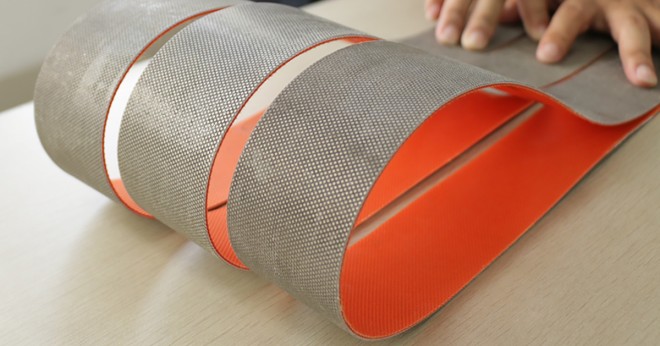Diamond tool electroplating
Diamond tool plating is the process of electrodepositing a base metal (such as nickel or cobalt) onto a substrate (such as steel) to firmly surround the diamond particles. This electroplated diamond tool offers several benefits, including excellent wear resistance, high hardness, and increased cutting or grinding efficiency. Such as flap disc, sandpaper, sanding belt, sanding disc, etc. The application of diamond tool plating is widely used in various industries. In the mechanical industry, these tools are commonly used in drilling, cutting and grinding applications. In the electronics industry, they are used for precision machining of electronic components. The glass industry utilizes diamond tool plating to cut, shape and grind glass products. In the construction industry, these tools are used to cut and polish building materials such as concrete or ceramic tiles. In addition, diamond tool plating is also widely used in drilling and completion processes in the oil drilling industry. Overall, electroplated diamond tools improve their performance and expand their applications in different industrial sectors.
In today’s rapidly developing high-tech society, the need for efficient, durable tools is crucial in various industries. Electroplated diamond tools are a popular choice due to their superior performance. However, despite these advantages, users often encounter challenges that reduce their efficiency and service life. One of the major problems faced by users is the gradual peeling off of the coating used in electroplated diamond tools. This can cause a significant reduction in tool performance and severely impact its overall service life. In this article, we will explore some of the most commonly encountered problems associated with electroplated diamond tools and discuss effective solutions to overcome these problems.
How to choose diamond?
Purity: Look for diamonds that are as pure as possible. Pure diamonds are colorless and transparent, with a common yellow-green tint. Avoid diamonds with excessive inclusions, as they may appear gray-green or take on other colors. Boron-containing diamonds should be avoided as they will appear black.
Structure: Examine the diamond’s structure under a metallographic microscope. Natural diamonds usually take the form of octahedrons, rhombohedral dodecahedrons, cubes or aggregates. Man-made diamonds can have different appearances. Impurities and Imperfections: Avoid using diamonds with visible impurities and imperfections as they can affect the performance and durability of your diamond tool. Impurities can weaken a diamond and make it less efficient at cutting.
Diamond Quality: Considers the overall quality of a diamond in terms of color, clarity, cut, and carat weight. While these factors are typically associated with gem-quality diamonds, they can also affect a diamond’s suitability for use in tools. Choose diamonds with better color and clarity grades for improved performance.
Application: Understand the specific requirements of the diamond tool application you have in mind. Different diamond qualities and sizes may be suitable for different tasks. For example, a larger diamond with lower clarity but higher strength may be better suited for heavy-duty applications, such as drilling through hard materials, while a smaller, more transparent diamond may be better suited for precision cutting.
How to solve the problem of coating tools falling off?
Coating tools play a vital role in multiple industries, ensuring efficiency and precision in various processes. However, a long-standing problem that has plagued manufacturers and users is the problem of coated tools peeling off. To alleviate this problem, experts have proposed several effective solutions, focusing on optimizing the electroplating process and enhancing the bonding force between the coating and the substrate.
First of all, to improve the overall quality of the coating, the plating solution formula and electroplating process must be optimized. By using live charging technology, manufacturers can effectively prevent bipolarity, which weakens the bonding strength of coatings. In addition, for workpieces with complex shapes, the use of short-time high-current impact air plating has proven to be beneficial. This technology helps reduce the effects of internal stress and hydrogen evolution, resulting in a higher-quality coating that is less likely to peel off.
Secondly, enhanced pre-plating treatment is critical to promote proper adhesion between the coating metal and the base metal. Burrs, oil stains, oxide films, rust and scale on the surface of the substrate must be completely removed. In doing so, the normal growth of the coating’s metal lattice is promoted, thereby significantly improving the overall bonding strength.
Additionally, if a power outage occurs during the thickening process, specific measures are recommended to ensure that the workpiece retains a solid coating. In this case, the workpiece should be placed in the electrolyte for cathodic reduction. After the reduction process is completed, the workpiece is loaded into the tank for electroplating to ensure the necessary bonding force of the coating. Focus should also be placed on optimizing the technology and procedures in the sand removal process to reduce power outage time. By minimizing power outages, sand can be drained and concentrated in the original or backup sand tank. This ensures improved bonding between the diamond particles and coating, increasing durability and reducing the likelihood of shedding.
These proposed solutions aim to solve the long-standing problem of coated tool shedding. By implementing optimized plating techniques, enhancing pre-plating treatments, and implementing effective remedial measures during outages, manufacturers can significantly improve the quality and strength of their coatings. These efforts will further improve the performance and reliability of coated tools, ensuring optimal productivity and reducing maintenance costs for industries that rely on these tools.
Post time: Oct-25-2023

